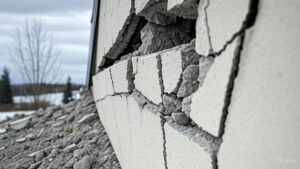Massive Alaska Earthquake Strikes in 2025: Devastation, Response, and Recovery Efforts

Introduction
On [current date, 2025], a powerful Alaska earthquake rocked the region, sending shockwaves across the state and triggering tsunami warnings along the Pacific coast. The Alaska earthquake 2025 is being reported as one of the most significant seismic events in recent history, with preliminary magnitudes reaching [insert magnitude, e.g., 7.5 or higher]. This article provides an in-depth look at the Alaska earthquake today, its impact, emergency response efforts, and what residents should do to stay safe.
For the latest official updates, visit the USGS Earthquake Hazards Program.
Key Details of the Alaska Earthquake 2025
-
Magnitude: [X.X] (as reported by the USGS – United States Geological Survey)
-
Epicenter Location: [Nearest city/region, e.g., near Anchorage, Aleutian Islands, or Southern Alaska]
-
Tsunami Warning: [Yes/No – if yes, which areas were affected?] (Check NOAA Tsunami Alerts for real-time warnings.)
-
Aftershocks: [Number and intensity]
Why Alaska is Prone to Earthquakes
Alaska sits on the Pacific Ring of Fire, a hotspot for seismic activity due to tectonic plate movements. The North American Plate and the Pacific Plate collide here, making the region highly susceptible to earthquakes and tsunamis. The 1964 Great Alaska Earthquake (magnitude 9.2) remains the most powerful recorded in U.S. history, and today’s event has reignited concerns about Alaska’s earthquake preparedness.
For more on tectonic risks, read Alaska’s Seismic Hazards Report.
Impact of the 2025 Alaska Earthquake
1. Structural Damage and Infrastructure Collapse
Reports indicate significant damage to:
-
Roads and bridges (key highways disrupted)
-
Buildings in Anchorage, Fairbanks, and other major cities
-
Oil pipelines (critical for Alaska’s economy)
-
Power outages affecting thousands
For emergency resources, visit Alaska Division of Homeland Security & Emergency Management.
2. Tsunami Threats Along the Coast
The National Tsunami Warning Center issued alerts for:
-
Coastal communities (e.g., Seward, Kodiak, Valdez)
-
West Coast of the U.S. and Canada (as far as California)
-
Hawaii and Pacific regions under watch
3. Human Casualties and Emergency Response
-
Fatalities and injuries reported (numbers still rising)
-
Search and rescue teams deployed
How Alaska is Responding to the Earthquake
1. Immediate Emergency Measures
-
Evacuations in tsunami-risk zones
-
Shelters opened in safe locations
-
Military and National Guard assisting in relief
For shelter locations, check Alaska Emergency Operations Center.
2. Long-Term Recovery Plans
-
Federal disaster declarations expected
-
Rebuilding infrastructure (roads, hospitals, schools)
-
Mental health support for survivors
For disaster assistance, visit DisasterAssistance.gov.
What to Do After an Alaska Earthquake
If you’re in Alaska or a tsunami-prone area:
-
Drop, Cover, and Hold On during shaking.
-
Move to higher ground if near the coast.
-
Avoid damaged buildings and follow official alerts.
-
Prepare an emergency kit (food, water, first aid).
For a complete preparedness guide, see Ready.gov Earthquakes.
Conclusion: Staying Prepared for Future Earthquakes
The Alaska earthquake 2025 serves as a stark reminder of the state’s vulnerability to seismic disasters. Residents must stay informed through USGS alerts, NOAA warnings, and local news. By improving earthquake-resistant infrastructure and community preparedness, Alaska can mitigate future risks.
For real-time updates, follow:
#AlaskaEarthquake #Earthquake2025 #TsunamiWarning #DisasterResponse #AlaskaNews #USGS #EmergencyPreparedness #RingOfFire
